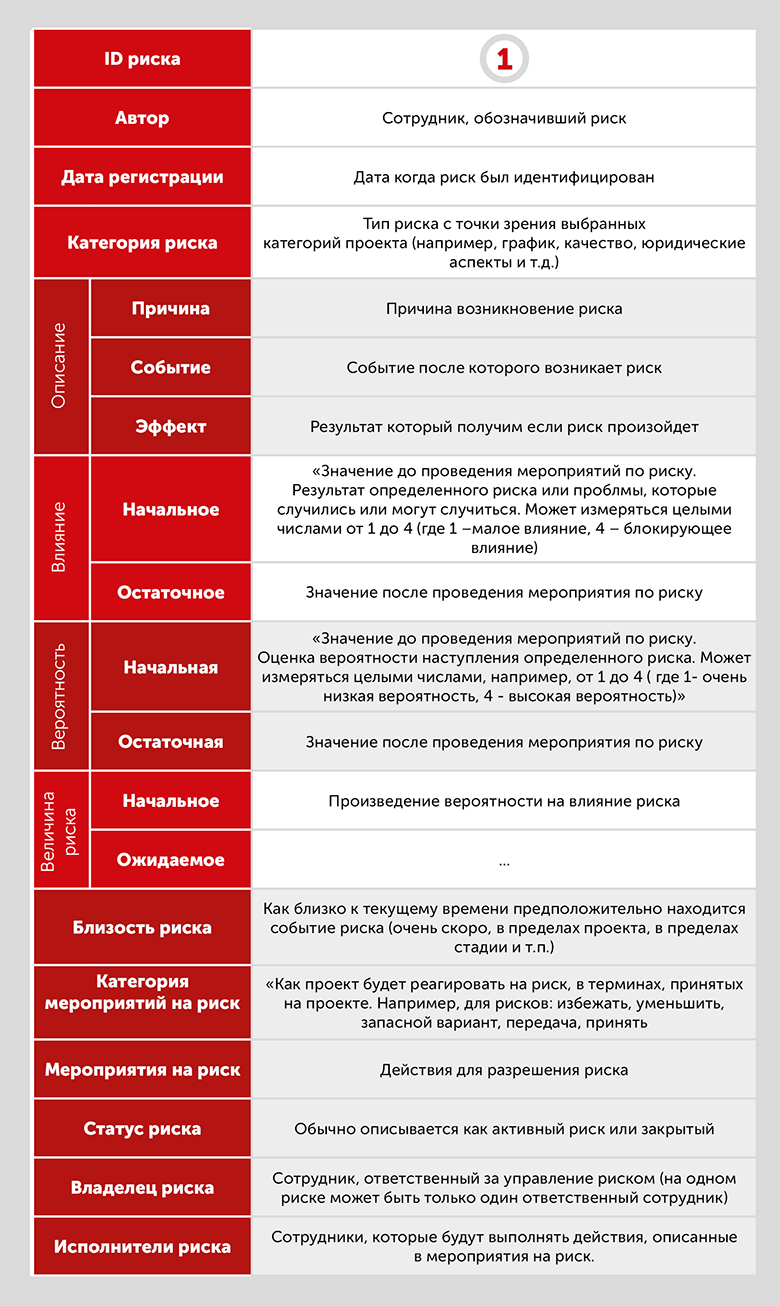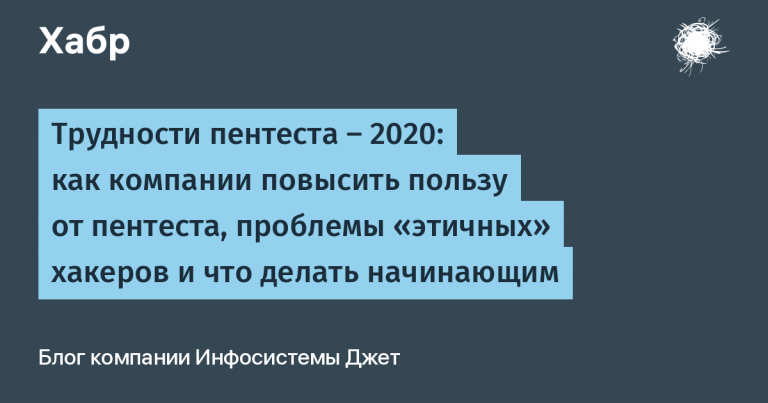tips for beginners, fakaps for experienced

First, I’ll tell you a little about my experience. I have been working in the IT field for about 13 years. Previously, I was an analyst, but for the last 9 years I have been involved in project activities. Together with the team, we created a remote banking service for Ryazan Bank, and now I am helping to raise talented young project managers. I spend most of my time working on enterprise risk projects. These are several projects for import substitution and a program for the bank’s transition to IRR (an advanced method of assessing credit risks).
Start of the project
Nothing is clear, but very interesting

So, you've been given a new project. While it’s very interesting and nothing is clear, where should we start?
First, you need to study the customer’s business problem. What does he want to get in the end? What is our project goal? What product are we creating as part of the project?
If there is already some documentation or business requirements for the project, for example, an architectural solution, these also need to be studied.
Second, get to know the customer and stakeholders. These are stakeholders who can set requirements for the project and use the final result of our project.
Thirdget to know the team so you know who to go to with the right questions.
Example. There was a case in my practice when I came to a project already at the implementation stage and did not check the project scope for completeness. At the acceptance stage, it turned out that we had implemented only 70% of the required functionality, and 30% was not in the contract of the contractor or the internal team, although this contract was agreed upon by the customer and the analyst on his part. Therefore, it is important, even if you did not come to the project at the start, to make sure that your colleagues did not forget anything and included everything in the project scope.
Planning
The plan is already half the success

Planning is an important step.
First, we determine the scope of the project’s work, determine what resources we need. If additional resources are needed that we do not have, we go to the selection process.
The most important thing here is not to forget about related teams, about their work, not to forget about infrastructure and, of course, not to forget about information security, which has often been forgotten lately.
Once we have identified the work that we need to do, it needs to be estimated.
Advice. The final performer must evaluate. Even if you worked as a developer, analyst and generally know everything better than anyone. Only the final performer will give you the correct assessment. But if you suddenly took it upon yourself and completed the assessment yourself, be sure to confirm it with the contractor. If the estimate is not clarified with the contractor, and you were mistaken and the work will take longer to complete in the future, this will affect both the shift in the project deadline and the increase in the project budget.
Now we can start creating a schedule.
Here it is important not to forget that everyone goes on vacation.
We also remember the issue related to infrastructure – the delivery of equipment is now very delayed. If in the best years server delivery could take two months, now in my practice it can take up to six months.
Example. One day we didn’t plan for a long delivery time and decided that the server would arrive in two months. It used to be like this before. And when work on setting up the stand had already begun, it turned out that we didn’t have the hardware yet.
But we went to the infrastructure and asked them for something from their supplies in order to assemble our server. It's good that they had supplies. Thus, there was no shift in work.
But supplies may not always have what you need.
Also, the schedule will need to take into account the selection. Moreover, the time it takes to find specialists also varies, and depends on who we are looking for. Now the selection can take from three to six months. HR will be able to tell you the exact timing depending on the classification of the specialist you are looking for.
After these steps, we can already create a budget.
First, we remember about the budget for related teams. Very often, several teams work within the framework of a project, and a budget for them will also be required.
Then don’t forget about infrastructure – hardware costs money.
Don’t forget about information security, because recently their measures have become paid.
Example. My planning for future projects begins in August. And when planning, we, of course, did not go to information security, did not talk about the fact that we were planning a new project, and therefore did not take this into account in the budget. And in January, when the project had already been approved, our colleagues came to us and submitted an invoice for their work. But we were lucky that such a situation occurred not only in one project, and it was possible to agree that funding would not come from project activities, but from the information security budget. But you are not always so lucky. Therefore, we do not forget about security guards.
We also remember in the budget that once a year employees can come for a promotion. We put a buffer on the rise. We set aside a buffer for the project bonus at the end of the project, if this is present in your practice.
Example. Now I don’t have the opportunity to include a buffer in the budget for an increase or a project bonus, because our budgeting rules are strictly dictated by the project office, and we form the budget based on the team’s current rates. But if there is a selection in the project, then I can get out of this situation in this way: I set the maximum bid on the market. And if we select an employee a little cheaper, then I have a buffer for a promotion or perhaps even a project bonus.
To create a schedule and budget, a tool such as Microsoft Project is mainly used. It allows you to detail the project step by step, make a budget calculation, track the process of implementing project stages and build a roadmap along the top of the project, which we can later show to our customer.
Advice. I recommend setting aside +15% for both the budget and the duration of the work, so that if something goes wrong or a key employee gets sick/quits, the project will not immediately experience a shift in the final deadline or exceed the budget. There are also situations where we still forgot something during the initial planning.
And another very necessary tool is the risk register. In order not to forget all the important points, I advise you to form it at the initial stage. It contains a description of all types of hazards that we may encounter, their possible consequences and measures to prevent, reduce and treat risks.
The project may have problems and risks.
The main differences between a risk and a problem:
risk – this is an event that may happen in the future and may lead to certain losses (decreased product quality, budget overruns, delays or complete failure of the project);
problem it is an event that has already happened. Risks turn into problems if you don't deal with them.

Example of a risk register according to the PRINCE2 standard
Advice. If you are just starting out in project management, be sure to make this table, involve a team in compiling it, and periodically refer to it to see if any risks have materialized. More experienced RPs keep this sign in their heads.
Well, remember that you are not alone, you still have a team, and when you have formed your plans and budget, check with them. I mostly go to IT leaders or tech leaders for confirmation. One head is good, but several are better.
Execution
Full immersion

Then we move on to the most interesting part – the execution of the project.
The most important thing here is to schedule working meetings with the team and the customer.
Advice. I recommend regular meetings at the same time to keep the project organized.
Each task must be clear. Both the performer and the project manager. That is, you, as a project manager, cannot think about tasks “well, the team is doing something and that’s okay.” No, you must understand why we are doing this task, why we are doing it at this stage, how we will use it in the future. And also the task should be set to the performer according to SMART, that is, it should be specific, measurable, achievable, relevant and time-limited.
The team basically perceives you as a savior, a helper, and, indeed, they can come to you with any problem and without a solution – and that’s normal. Your task is to help and guide them.
Praise the team even for small successes. Even a simple word “well done” always motivates you to do more.
My experience in communicating with a team or with individual employees shows that sometimes it is better to call than to text all day. Because the text may be interpreted incorrectly, but on a call you can discuss the problem easier and faster. I use the same rule when interacting with IT leaders and technical leaders, because due to their heavy workload, they will never complete my task in the background or very soon.
Advice. I make an appointment, thereby allocating their time to my task, and we work on it together.
Control
Chief, everything is under control!

The importance of control in project management is difficult to overestimate.
Control is carried out both at the customer level and at the team level. In order for your task to be completed on time, come to the contractor a few days before. By doing this, you will increase the chance that a person will remember your task, complete it, and no shift in deadlines will happen.
We remember that most customers are visual people, they love beautiful pictures, and they are unlikely to understand the plan from MS Project. Therefore, we make a beautiful presentation for them with the main points.
Advice. I usually use this presentation structure:
the budget we spent
how much is left
road map
top level of the entire project
detailing the specific stage we are currently at, with the status of work, problems and risks if we need to discuss
and instructions from the previous status.
When a problem arises on a project, it is better to come to the customer and tell them about it right away than to make excuses at the end of the project why we couldn’t do something. It happens that project managers are sometimes afraid to talk about their problems and try to save the situation and solve something on their own. Yes, this sometimes works, but there are not so many successful cases.
Therefore, it is better to come to the customer honestly and admit that yes, we have a problem in the project. Immediately offer several solution options with an assessment of the pros and cons, and the customer will already choose the final option. It is also very important to keep minutes. This is especially important when customers tend to often abandon their decisions when it is beneficial for them. It is better to keep the minutes in a publicly accessible place so that if you go on vacation or suddenly get sick, the employee replacing you can easily find the necessary information. And in general, I also recommend storing general information on the project in a publicly accessible place. I use a Confluence page with a specific structure for this. We display information on the project team, including the customer’s team. For example, the main artifacts can be business requirements, architectural solutions, presentations, status presentations with the customer, schedule. We only store the budget separately, because this information is not for everyone.
Completion
We are a team

So, we have come to the end of the project, all projects come to an end someday.
And here the most important thing is to support the team. We roll out the latest releases, IT leaders, technical leaders, and project managers are responsible for this – sometimes they are removed from this. But even a tech leader needs support.
Example. Recently we were rolling out a release, and we had to have installation in one day. Everything, of course, did not go according to plan, and I had to work a second day. And for those leaders, my words of support were important: that we will explain everything to the customers, and it’s okay, and we will all be paid for the second day too.
Among other things, highlight the team’s victories in the status with the customer, because they often think that this is our usual work and it is not worth gratitude. Train your customers to say thank you.
A pleasant moment at the completion of a project is the project bonus. And you, as a project manager, must go to the customer and justify his monetary “thank you.” First of all, I ask for the team, but I might already get this as a nice bonus.
And remember that a team is forever. Very often, after the completion of a project, the team is transformed into a product support and development team, and the project manager leaves it. But, always be open, if the team comes to you with some questions, help. Because you can all meet in a new project, perhaps even in different companies, and your responsiveness will be a plus for you.
Example. It happened to me that I did two projects with the same team. They were at different times and the friendly note helped us successfully complete the second project too.
Well, as they say, the IT world is round, we will still meet in a new project.
Advice for beginners
We looked at what a project looks like from initiation to completion, what problems there are, and what you should pay attention to.
Let's see what management methodologies exist, here I have listed the main ones, in fact there are many more of them.
Most often, in real management practice, a symbiosis of approaches is used.
Methodologies
Waterfall
Agile
Scrum
Kanban
Methodology of rational management (Lean)
Extreme Programming (XP)
You can read more details here: about project management methodologies .
There are also standards that describe these approaches.
Documentation about project management is mainly in English, but you can find a decent Russian translation on the Internet.
If you are just starting out in project management or want to move into this direction, then I would definitely not recommend reading PMBOK, at least because it has 700 pages, and it is definitely not a book for easy reading at night. Typically, PMBOK is used either to deepen one’s knowledge in a certain area, or in preparation for certification.
Now the current 7th edition, which, in my opinion, has only confused everyone. I recommend starting reading from the 6th edition.
As the first book to read, I would recommend “Deadline, a novel about project management.” Tom DeMarco went through all stages of the project life cycle: from forming a team to delivering results. The book is easy to read as it is written in the style of a business novel.
That's all for me, thanks for your attention. If you have an interesting case or need some advice on your work, I’m always open to communication.





